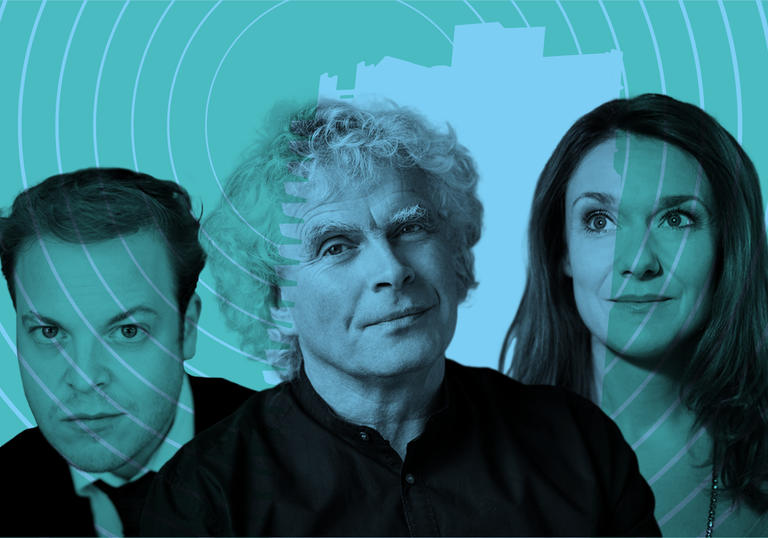‘A symphony must be like the world’, Mahler famously declared, ‘it should contain everything’. In his world-view that didn’t simply mean vast orchestras, for several of his symphonies also include vocal movements. Similarly, while he had previously written other song-cycles with orchestra (a genre effectively invented by Berlioz with his exquisite Nuits d’été) Das Lied von der Erde (The Song of the Earth) crowns them all in terms of length and emotional scope. He composed it in 1908–9 after a year in which he’d had the devastating blows of the death of his beloved young daughter Maria and the diagnosis of the serious heart condition that was to kill him in 1911.
Experts have long argued over whether Das Lied is essentially a symphony or a cycle of songs but in the end what matters is the potency of Mahler’s creation and its powerful cumulative impact. It consists of six songs, of which the last, ‘Der Abschied’ (The Farewell) is by far the longest, creating the emotional and dramatic peak of the work.
For his texts, Mahler looked to Asia: he found the Chinese poems in a collection brought together by the German poet Hans Bethge and named – rather predictably – The Chinese Flute. The German translations were often somewhat fanciful but this clearly didn’t put Mahler off!
As well as the two voices (originally alto and tenor, though he did suggest that if need be the alto part could be sung by a baritone), Mahler calls for a typically huge orchestra. But such is the delicacy of much of the writing that arrangements for smaller ensembles, such as the version we hear today by Glen Cortese, are highly effective.
The first song ‘Das Trinklied vom Jammer der Erde’ (The Drinking Song of Earth’s Sorrows) has a pulverising energy running through it and the high-lying nature of the tenor writing (here sung by Andrew Staples) adds to the sense of hysteria.
The alto, here the mezzo-soprano Magdalena Kožená, makes her first appearance in ‘Der Einsame im Herbst’ (The Lonely One in Autumn). This is an introverted song lent a touchingly mournful colouring by the combination of solo oboe and muted first violins. As the protagonist equates a world-weariness with the sense of nature dying in autumn, the words ‘Mein Herz ist müde’ (My heart is tired) are searingly coloured – surely a reference to Mahler’s own plight.
The tenor revives matters with ‘Von der Jugend’ (Of Youth) which is full of optimism and energy. Triangle and piccolo offer a playful quality as the singer recalls an idealised scene in which a group of young men are gathered in a pavilion, drinking and writing poetry. Against this is set a peaceful backdrop of a pond with a jade bridge over it. Mahler conjures the Orient with writing full of whole-tone and pentatonic scales of the kind found in Southeast Asian music.
‘Von der Schönheit’ (Of Beauty) finds the mezzo recalling a scene in which young girls are picking flowers by the river banks, Mahler evoking a sense of innocence through glistening textures of flutes, violins, horn and later a solo violin. As the scene is disrupted by the arrival of a group of lads on horses the composer adds a sense of menace not apparent in the original poem through vehement writing and a quote from Tchaikovsky’s 1812 Overture. Chaos threatens but is averted, though as the interlopers leave, one has caught the eye of the prettiest girl and her sense of longing is made apparent in the plaintively fluttering orchestral postlude.
You could probably guess the subject of the fifth song – ‘Der Trunkene im Frühling’ (The Drunkard in Spring) – without knowing it, with Mahler brilliantly capturing the staggering gait of the protagonist. As the drunkard (sung by the tenor) hears of the arrival of spring from a singing bird there’s an ominous quality to the words that is at odds with the bustlingly upbeat ending – suggesting that any such happiness is merely an illusion.
From such an ending, whether illusory or not, the sense of shock as Mahler plunges us into the sonic depths for the opening of the last song ‘Der Abschied’ (The Farewell) could not be more extreme. Through this texture an oboe sounds an edgy, desolate tune, signalling the arrival of one of Mahler’s great epic slow movements. The music gradually rouses itself, but it’s a world blighted by grief and pain. Then a silence, before the mezzo enters with the heartrending words ‘Die Sonne scheidet hinter dem Gebirge’ (The sun is setting behind the mountains). Clearly we’re not talking of simply an end to the day but a farewell to life itself. And though that valedictory quality runs through the entire half-hour movement it’s impossible not to be profoundly moved, right through to the concluding words ‘Ewig… ewig…’ (Forever… forever…).
© Harriet Smith

